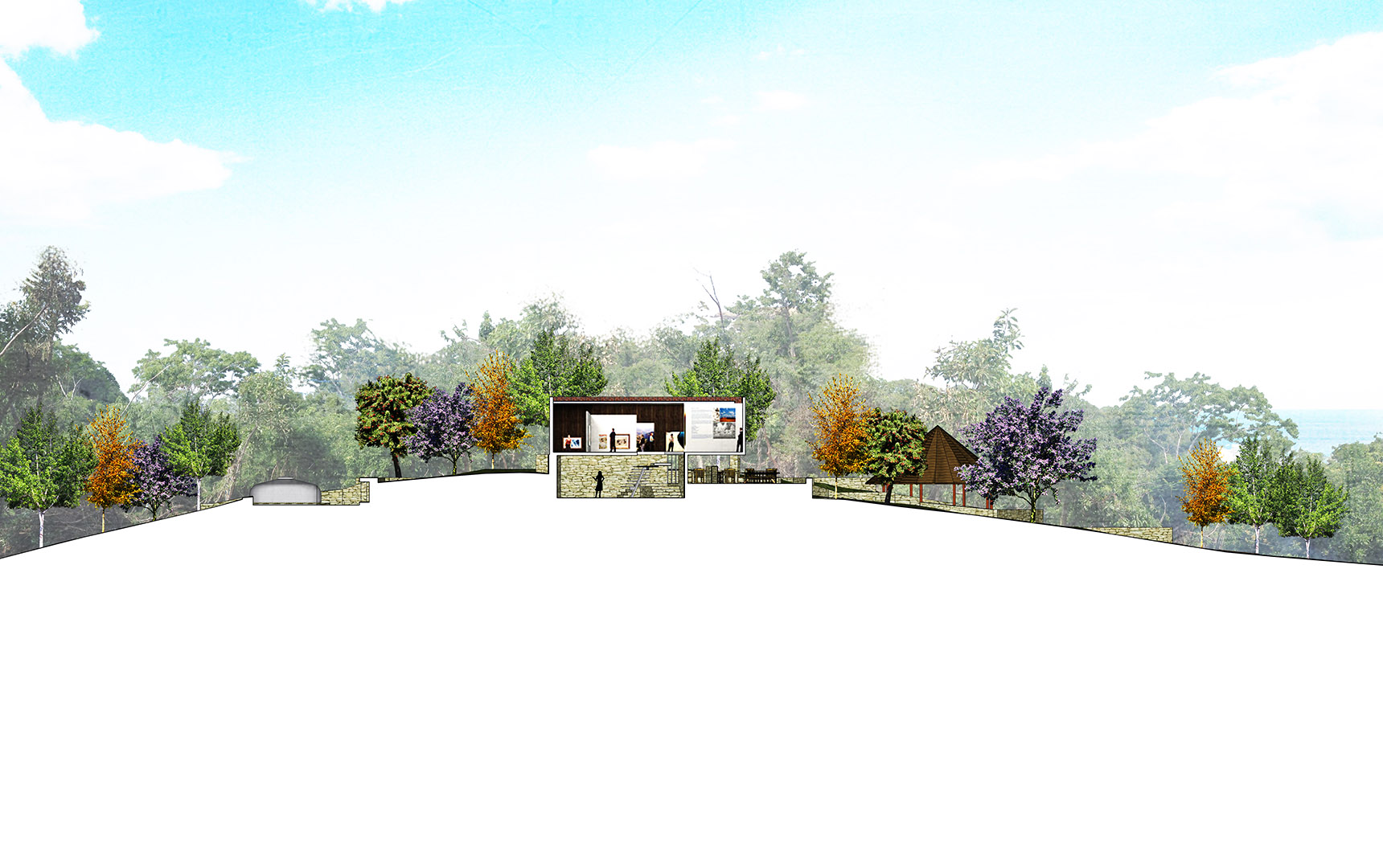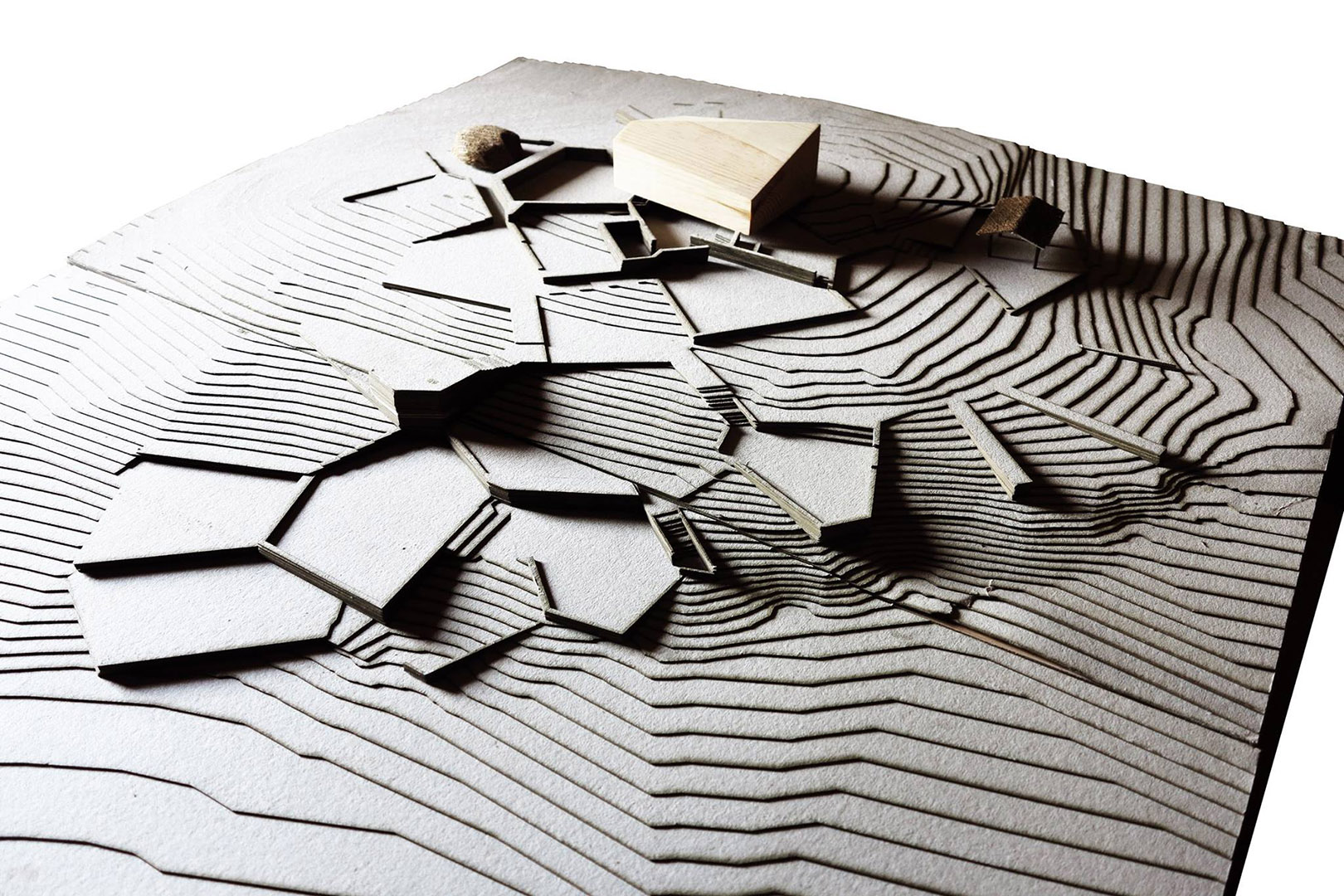The Cometa project is an integral concept that aims to place a high value on the archaeological remains existing in the area, enhance cultural and historical values, and provide communal spaces that enhance these concepts. Mazunte is a land of contrasts with a recent tourist infrastructure in a society that boasts a culture and customs confronted in the dynamics of the accelerated development process.
A cultural and / or multifunctional space is required in El Mazunte that identifies and bears witness to its cultural structure, that makes the locals feel proud of their heritage, their tasks and their roots, that also presents an interesting proposal, that offers to tourists visiting this continuously expanding town, an overview of the culture of this part of the Oaxaca coast.
OPERATION AND OBJECTIVES OF THE INTEGRAL PROJECT PUNTA COMETA
Currently, the visits to Punta Cometa are anarchic and uncontrolled, the functionality strategy aims that visits to this site are mostly guided to ensure cleanliness, care for nature and safety of the walker, starting the tour of the townhouse, visiting the community museum its surroundings and later accessing Punta Cometa.
DESIGN BASES
1. Bioclimatic architecture.
2. Place of health and integration with nature.
3. Reading library.
4. The traditional arts and crafts center, and herbalist.
5. Interpretive space of local culture.
6. Sound of the sea.
7. Welcome and service area for trails.
8. Local meeting place.
9. Learning traditional healing techniques.
10. Prevailing winds and views.
BACKGROUND
Punta Cometa is a mountain located to the east of the Mazunte community, between the main beach and Mermejita beach, its territory is approximately 10 hectares, it has two beaches, Comet and Comet beach, its geographical location makes this place is and has It has been a very important place in the past, it is known that in pre-Hispanic times it was occupied by the Aztec empire and it established a military stronghold in this place since colonial times it was taken by the Spanish and later fought by pirates, it exists in this place an overlapping stone wall, what the locals currently call the “stone corral”.
The hill of Punta Cometa is currently considered as the strip of land with the most exit to the sea in the southern Pacific of the republic, this means that from this place you can see the sunrise and sunset, and you can also see the passage of many migratory aquatic species, such as the whale and in the air the pelican, among others.
At the beginning of the ’90s the locals decreed the Punta Cometa hill at the community level as an ecological reserve space, today Punta Cometa is highly visited by tourists and people who go to this place to recharge energy because it is said that this hill is magical.
At Punta Cometa, it is not allowed to build anything that alters its ecosystem, only the improvement of the trails, security at the viewpoints and infrastructure that prevents visitors from putting their lives at risk.
Only 100 meters. Before accessing the Punta Cometa hill, there is a land that the community calls “Casa del Pueblo” which is linked to Punta Cometa and in it if it is allowed to build certain things according to the construction regulations of Mazunte.
Punta Cometa, together with the Mexican Turtle Center, are the most important points of tourist interest and visited in the tourist corridor “Puerto Angel- Ventanilla Beach”. The turtle is of utmost importance to Mazunte. Since the second half of the 20th century, a market for turtle meat and eggs developed, having its own slaughterhouse. Starting in the 1980s, concern about the decrease in the number of turtles led to an absolute ban on turtle meat and eggs in Mexico. To replace the income of families affected by this ban, ecotourism was based on turtle conservation and development of natural cosmetics.
Currently, the main attractions of Mazunte are the Mexican Center of the Tortoise and the natural cosmetics of Mazunte. Given the importance of this animal to the people, the formalization of turtle shells is taken as the main concept of the spatial organization of the museum’s proposal.
This formalization is characteristic for following cell growth patterns through diagrams called a Voronoi diagram. This system provides organic geometric formations that will help us to establish the circulation on the ground. There are some generating shapes for the Tortoise shell geometry. By simplifying the shell lines we find that the formation is based on Voronoi geometry.
The natural terrain resembles a turtle shell in shape. Taking the shape of the turtle’s shell geometry, it is modified according to the uses, views and routes that interest the project. This plot is printed on the ground, leaving an imprint that will formalize the routes. The main volume of the museum is placed in the highest part of the hill, showing itself as a clean, clear and forceful cubic volume of brick as opposed to the more organic forms of the access route. This location of the museum’s volume allows it to have a privileged position where it has views from all sides, especially towards Mermejita beach and the town of Mazunte. The lines of the Voronoi diagram printed on the ground are used to build walls, squares, viewpoints, route, etc. Finally, the project is glimpsed in its entirety, adapted to the environment. The geometries closest to the access road are used to formalize retaining walls and flat areas to convert them into a parking area.
Using the lines of the Voronoi diagram, the access routes that run through the vegetation through various squares are configured. One of the geometries is used to elevate the route above the tops of the trees and make a viewpoint towards Playa Mermejita, Mazunte and Punta Cometa. In the highest part of the hill, the museum is placed together with a small souvenir shop and a cafeteria. In a part of the land and with “hidden” access is the Temascal area, to keep privacy and the environment — necessary. At the end of the tour, the existing palapa is placed where visits to Punta Cometa leave.






